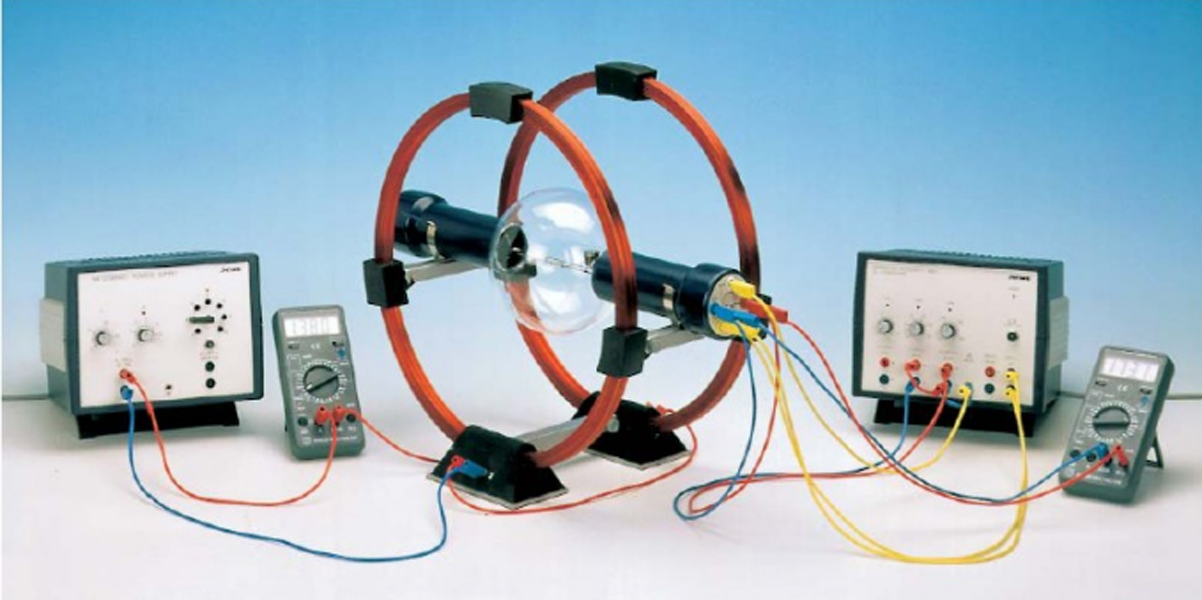Specific charge of the electron – e/m

Electrons are accelerated in an electric field and enter a magnetic field at right angles to the direction of motion. The specific charge of the electron is determined from the accelerating voltage, the magnetic field strength and the radius of the electron orbit.
- Neon-filled narrow beam tube for perfect visibility of the electron beam
- High-precise and easy to perform measurements with the built-in fluorescent ladder construction
- Suitable for demonstration and lab courses as well
- Large Helmholtz coils to generate a large volume homogeneous magnetic field. Can be used in a lot of different experiments
- The observation chamber allows to perform the experiment in spite of daylight
PHYWE power supply, regulated DC: 0…12 V, 0,5 A; 0…650 V, 50 mA / AC: 6,3 V, 2 A
PHYWE Narrow beam tube
e/m – Observation chamber
Helmholtz coils, one pair
Digital multimeter 2005
Conn.cord,safety,32A, 25cm, red
Conn.cord,safety,32A, 25cm, blue
Conn.cord,safety,32A,100cm, red
Conn.cord,safety,32A,100cm,yellow
Conn.cord,safety,32A,100cm, blue
Connecting cord, 32 A, 1000 mm, red
Connecting cord, 32 A, 1000 mm, blue
PHYWE power supply, universal DC: 0…18 V, 0…5 A / AC: 2/4/6/8/10/12/15 V, 5 A
Determination of the specific charge of the electron (e/m0) from the path of an electron beam in crossed electric and magnetic fields of variable strength.
- Cathode rays
- Lorentz force
- Electron in crossed fields
- Electron mass
- Electron charge
